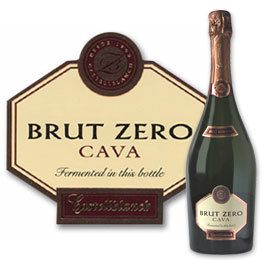 In both outdoor activities and relaxed summer afternoons, I always find myself picking up a few bottles of Cava to enjoy with company. Cava's approachable acidity and lovely fruity flavors offer great value buys for happy hours and fun occasion!
In both outdoor activities and relaxed summer afternoons, I always find myself picking up a few bottles of Cava to enjoy with company. Cava's approachable acidity and lovely fruity flavors offer great value buys for happy hours and fun occasion!
Cava, like Champagne in France, is made with the Traditional Method of sparkling wine production, however it can not be called "Champagne". The law prohibits the use of the term Champagne for sparkling wines outside of the Champagne region in France. While most people are used to call sparkling wines "champagne", the proper name for all sparkling wines other than Champagne thus is "sparkling wine".
1. Cava Winemaking Method:
The bubbles or sparkles are produced during the Second Fermentation. In the Traditional Method of sparkling winemaking, the Second Fermentation does not take place in the pressure tank, but instead occurs in the bottle, the same bottle to be sold eventually.
2. Cava Wine Regions:
In Spain, Cava is produced in DO* Cava, which includes five regions. The grapes for Cava are Macabeo (or called Viura in Rioja), Xarel-lo and Parellada. Some producers now include a proportion of Chardonnay (one of the traditional grapes for Champagne) for its flavors that are familiar to international wine consumers.
*DO, Denominación de Origen, a Spanish quality wine classification.
3. Flavors and Styles of Cava:
Cava is required to age for at least 9 months in the bottle. Such aging time gives Cava the flavors of the pleasantly yeasty, green apple, cherry, berry, peach, and occasionally almond nut. Its clean finish with mellow acidity are always refreshing and friendly. There are quite a few different styles of Cava. Some best to pair with appetizers, others seafood dishes, and yet others by itself as delightful summer picnic wine or aperitif.
4. Sweetness Levels of Cava:
Another style difference is its various levels of sweetness. What's called Brut Nature would have only up to 3 grams sugar per liter of Cava wine, and when the sugar level increases to Extra Brut, it could include up to 6 grams of sugar per litre. Cava that has between 0 and 15 grams sugar per liter is called Brut. The rest of the Cava has increased sweetness level that could be detected by most palates. From low to high levels of sugar, these are Extra Dry, Dry, Semi Dry and finally Sweet.
A bottle of beautiful Cava could be about €10. What a bargain to add sparkles to your life!